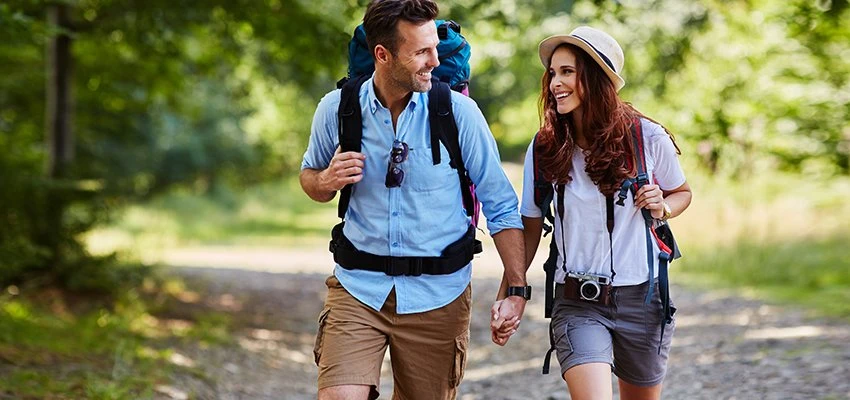In this time of self-isolation and distancing from others finding activities to do or finding a facility to do them is problematic. Going alone or as a couple on a light nature walk may become your main activities for the upcoming weeks. The spring season is slowly appearing and progressing with sun rays melting away the snow and ice on the various nature path. Fresh air is a healthy way to chase the winter blues so trekking the various path in your parks can be healthy.
Contents

No matter your age or level of experience, the Spring season is the perfect time for a light nature hike or trek. To ensure you have a good time, proper foot care is essential. Keep your feet happy for the long-haul by following these five tips below.
Be mindful that every step you take sends a tiny jolt through your feet that is magnified by the weight of your backpack and all your gear. For simple day trips in later summer, essentially you really only need lightweight items such as snacks, water, smartphone, utility knife, extra socks, a hat, and a light jacket.
When choosing a hiking shoe look for one that is lightweight, breathable, flexible and (most importantly) fits your foot. Traditional heavy leather boots are not good footwear because they are stiff and abrasive to the feet.
When choosing hiking or trekking socks you want a combination of cushion and breathability. Too much moisture around your feet is detrimental and can cause serious problems over time, especially in the cold, damp weather. To avoid feeling miserable, it’s best to take the time to find appropriate socks to avoid suffering after you have finished your outdoor fun.
Unfortunately, most hiking shoes come with cheap foam insoles. They don’t provide enough arch support or shock absorption and usually end up flat as a pancake in not too many miles. Having a comfortable and durable pair of insoles in your trekking shoes for your light nature walk is crucial to your feet. In general, it’s a good idea to upgrade your insoles with a more supportive and comfortable orthotic in all of your shoes. It is especially useful when you are venturing in rugged outdoor terrain.
Hotspots are also known as blisters when you are hiking. The best preventive measures are:
Those measures will contribute immensely to eliminating most of the sources of friction that cause blisters. However, if you feel the pain of a blister coming on, you can use a bit of duct tape to provide a temporary “quick fix” until you get home. Since duct tape is very sticky on one side and smoothes on the other it will stay on and reduce the rubbing on your skin for a good period of time.
Finally, if nothing else works, you can always turn to “Vitamin I”, which is the pet name given to ibuprofen by outdoor enthusiasts. Commonly used anti-inflammatory and anti-pain medicine can provide you with enough temporary relief to get through your trip and keep your spirits up as well.
 |
 |
 |
 |
Great Ones for You